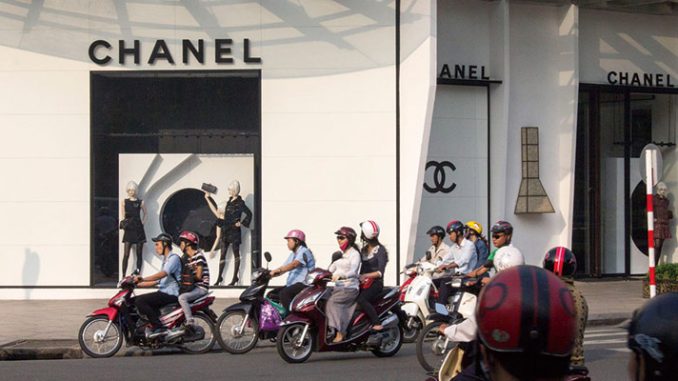
In Vietnam, after close to three decades of high economic growth under an authoritarian single-party political regime led by the Communist Party of Vietnam (CPV), social protests and calls for democratization have emerged although the country has often been singled out as a case displaying relatively “inclusive growth” with moderate levels of income inequality, some studies even suggesting a decline in income inequality between 1993 and 2006. 3 In view of this research, the recent politicization of inequality through large-scale public protests and other forms of mobilization may seem like a puzzle. But tolerance of inequality may differ in different context, ideological and otherwise. What is an acceptable level in one country may differ depending on ideology, cultural, historical and other reasons. In the Vietnamese political context, official party rhetoric repeatedly emphasises economic equality and democracy (dubbed as a Leninist version of ‘centralised democracy’), and that “the state” is not a neutral state, but a state on the side of workers and farmers. There is, however, a growing cognitive dissonance between an official discourse of economic equality and democracy and citizens’ lived reality. This dissonance is connected with the explosion of political blogs and social media after 2006. Social media continues to grow, despite the restrictive regulations introduced in 2013, banning discussion and sharing of news over the Internet as well as anything that could be seen as opposing the party-state, threaten national security, social order and safety, sabotaging national unity etc. 4 and despite widely discussed imprisonment of famous bloggers. 5 Blogs discuss various contentious issues such as Vietnam’s relations to China, democratization, pluralism, human rights, corruption and inequality. In particular, the alleged immense wealth illicitly accumulated by party leaders has stirred much rage. 6
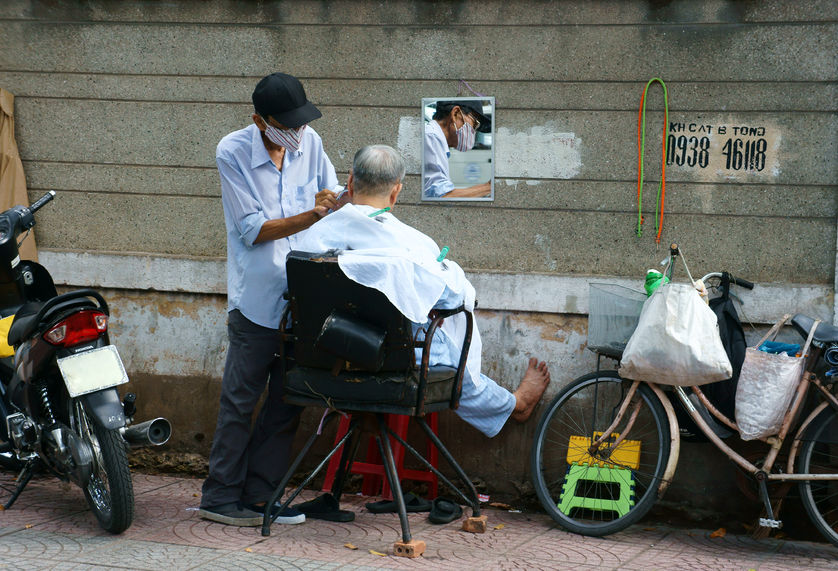
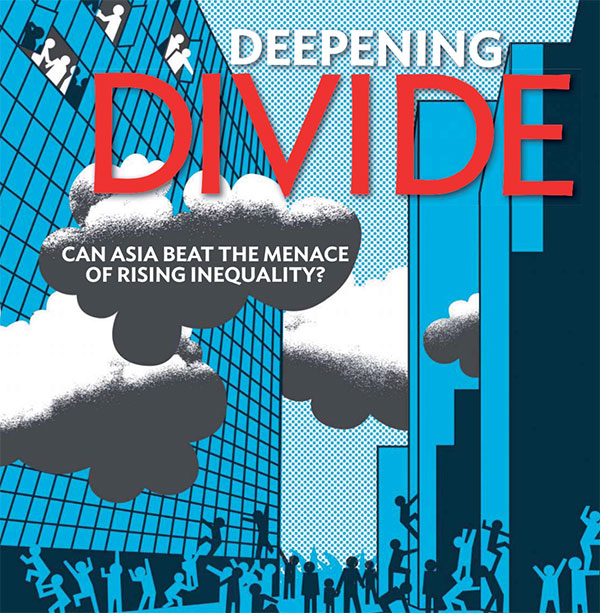
Inequality is not evenly spread over national space. In some provinces people are still more or less equally poor, in others development has been fairly equal, and yet other provinces have seen a fast development of inequality. In other words, nationally aggregated levels of inequality fail to capture politically relevant geographic patterns of inequality. Despite moderate changes in inequality at the national level, the Vietnamese case indicates a development of geographically concentrated areas, or agglomerations, of extremely high levels of inequality. These areas also coincides with the place which also saw the rise of massive public protest movements in 2005-2006, and is home to many of the pro-democracy activists who paved the way for the development of a rather vocal political civil society with public demands for democratization of the political regime. 7 Agglomeration of inequality seems to have formed the structural condition for the development of concentrated ‘spaces of discontent’, where different forms of mobilisation, including public protest movements, relating to different issue areas (such as labour problems, low wages, human rights abuses, lack of social security, land grabbing, land distribution, environmental destruction etc.), interact and confront authoritarian political closures and expand political space. Through the Internet, these initially rather place-based protest received new, politically interested and geographically dispersed audiences.
Economic reforms and agglomeration of inequality
Industrialisation took on a remarkable concentration of FDI-led manufacturing to a couple of provinces around Ho Chi Minh City, Dong Nai and Binh Duong, which is an area with a long history of struggle among civil society groups for organisational autonomy from the state and for democratic rights. 8 Economic reforms resulted first in regionalised economic inequality, with a growing concentration of wealth in the southern parts of the country, and higher levels of inequality in Gini terms in that region, as compared to other regions. 9 A recent UN-HABITAT report estimates Gini coefficients for cities and single out Ho Chi Minh City as one of the most unequal cities
not only in Asia but also in the world with a Gini coefficient estimated at 0.53. This places HCMC in the category “Very High Inequality”, which according to UN-HABITAT “points to institutional failures in income distribution” and a situation in which “city and other authorities should address inequality as a matter of urgency […]”. In this bracket, “inequalities are approaching dangerously high levels”. 10 An income Gini Coefficient at 0.4 is defined as the “international alert line, above which inequalities may have serious negative political, social and economic consequences”. According to the data presented, Ho Chi Minh City stands out as a highly unequal city “with values well above the national average”. In Hanoi, as comparison, the inequality level was much lower and estimated at 0.39. In other words, the distributional implications of economic development differ depending on whether results are viewed from a national or are estimated for specific areas.
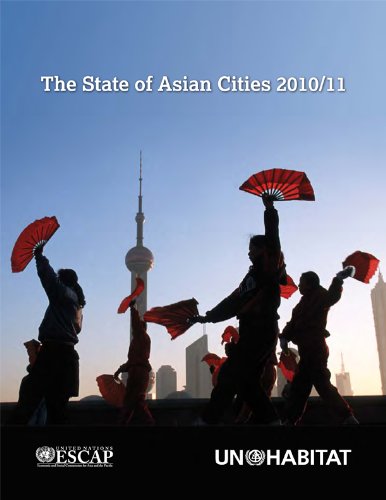
Also perceptions of inequality seem to follow a similar pattern. A survey published in 2014, showed a “substantial concern about inequality” among Vietnamese citizens and in particular among urban residents who expressed the strongest concerns – as much as eight in ten urban residents worried about rising levels of inequality, most of whom residing in the same area. 11
Agglomerations of inequality and spaces of discontent
It was in this southern industrial hub surrounding that the first large-scale labour protests in the reform era took place. Strikes were illegal but they continued to grow throughout the reform period and exploded in 2005 and 2006 and onwards, drawing hundreds of thousands of protesters. When spreading from the south to the entire country, the party increasingly saw protests as potentially threatening to social and political order. State responses became more confrontational as the protesters gained support from other pro-democracy groups. But the protests had already opened up political space for other forms of protests over other issues relating to land grabbing, religious rights and against environmental destruction and other. Several pro-democracy groups formed, new parties and independent trade unions were publicly announced, some with the explicit aim to “protect and promote workers rights, including the right to form and join unions without government interference [and] for justice for people whose land had been confiscated by government officials, and for the end of dangerous working conditions.” 12 Among the pro-democracy groups announced between April and October the same year, the most widely known was Blok 8406 who published their “Manifesto 2006 for Freedom and Democracy” on the Internet. A number of famous dissidents supported the workers protests and some of their newsletters, such as Tổ Quốc (Homeland), 13 addressed rising inequality and argued that the only way to achieve a more just society was through democratization. Carlyle Thayer has described this period as one in which “pro-democracy groups began to coalesce into an identifiable movement”. 14
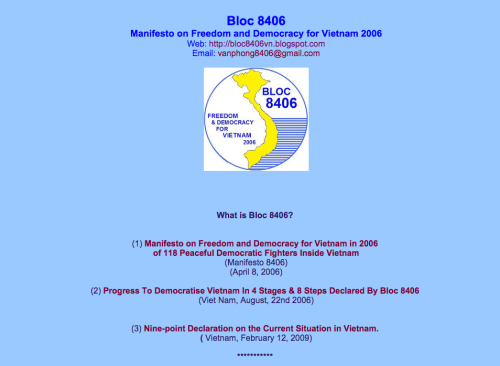
The rise of these largest protests in post-war Vietnam, were only months later followed by a concerted crackdown in which most important leaders were arrested. 15 In a second step came a tightening grip over media, the Internet and even social science researchers – over most independent sources of voice. After the trials of protest leaders and dissidents commenced, also lawyers who defended them in court proceedings were targeted, and there were videos posted on YouTube allegedly showing journalists who were violently attacked when documenting and reporting from protest sites.
The violent repression and long prison sentences handed down to young protest leaders were condemned by many bloggers and caused resentment across layers of the population. Larger protests re-emerged in 2011 and 2012, violent years with several land grabbing conflicts leading to violence on both the side of the state and by protesters protecting their land. In late 2012 came new public calls for democratization and in early 2013, coinciding with the promulgation of a new constitution, “Petition 72” was handed over to the party leadership in front of a crowd of journalists. It argued for multiparty democracy and only weeks after it was posted on the Internet, it was claimed to having received 12,000 signatories. Senior party members, for example a constitutional expert and former minister of justice, headed the petition group. The new Constitution contained no relevant changes in a democratic direction.
The large-scale protests emerging in the south did not demand regime change but opened up political space for others who were calling into question the political inequality permeating the regime. Many have argued for the Vietnamese political regime’s legitimacy and stability as long as it produces economic growth. A focus on the demand side of democratization, however, seems to contradict this expectation. Mobilisation into large-scale protests instead grew rapidly in a period of high economic growth and in the affluent south where poverty levels are among the lowest in the country – but with very high levels of inequality. The rise of a political civil society during and after the 2005-2006 protest suggested that established norms on how to think about political regime dimensions such as political representation and participation as inseparable from the Party have changed. People are increasingly behaving as citizens with political rights, even if such rights are not secured.
More research is required on the political dynamics of inequality in Southeast Asia but the case of Vietnam indicates the importance of moving below the national levels in order to probe the relation between spatial agglomerations of inequality, how it is politicized and political regime change.
Dr. Eva Hansson
Department of Political Science, Stockholm University
SE-106 91 Stockholm, Sweden, eva.hansson@statsvet.su.se
Issue 17, Kyoto Review of Southeast Asia, March 2015
Notes:
- ADB (2012) Asian Development Outlook 2012: Confronting Rising Inequality in Asia, <http://www.adb.org/sites/default/files/pub/2012/ado2012.pdf>; ADB (2013) Development Asia, Deepening Divide: Can Asia Beat the Menace of Rising Inequality? <http://www.development.asia/PDF/issue14/devasia14.pdf>. ↩
- ADB 2012, p.vi. ↩
- Brian McCaig et al, referred in E. Malesky et al, “Institutions and Inequality in Single-Party Regimes”,Comparative Politics, July 2011, p. 403. ↩
- Decree No 72/2013/ND-CP, July 15, 2013, of the Government on management, provision and use of Internet services and online information. ↩
- Reporters without Borders, “World Press Freedom Index 2014”, rank Vietnam 174 of 189 countries surveyed <http://rsf.org/index2014/en-asia.php>, an earlier report (“Programmed Death of Information – How the Party cracks down”) <http://en.rsf.org/vietnam-programmed-death-of-freedom-of-23-09-2013,45222.html> claim that Vietnam is the ”second biggest prison for bloggers and cyber-dissidents of the world” and that only in 2012, 48 bloggers and cyber-dissidents were prosecuted, “receiving a total of 166 years in prison”. ↩
- Ben J. Tria Kerkvliet refers a report “based on information from an un-named high-ranking official in the Ministry of Security [Bộ Công An], senior leaders who are inordinately wealthy thanks to kickbacks, embezzlement, and other corruption include former Secretary Generals of the Communist Party Đỗ Mười ($2 billion) and Lê Khả Phiêu ($500 million); the then Secretary General of the Party Nông Đức Mạnh ($1.3 billion); former national President Lê Đức Anh ($2 billion); the then President Trần Đức Lương ($2 billion); the then Prime Minister Phan Văn Khải ($2 billion plus); and the then National Assembly President Nguyễn Văn An ($1 billion plus)”, “Government Repression and Toleration in Contemporary Vietnam”, SEARC, Working Paper Series, No 119, January 2012, pp.3-4. ↩
- Carlyle A. Thayer, “Vietnam and the Challenge of Political Civil Society”, Contemporary Southeast Asia, Vol. 31, No. 1, 2009, pp.1-27, in particular pp.11-14. ↩
- Edmund F. Wehrle, Between a River and a Mountain: The AFL-CIO and the Vietnam War, (Ann Arbor: University on Michigan Press, 2005). ↩
- Stephanie Scott and Truong Thi Kim Chuyen, “Behind the Numbers: Social Mobility, Regional Disparities and New Trajectories of Development in Rural Vietnam”, in Taylor ed., Social Inequalities in Vietnam and the Challenges of Reform, (Singapore: ISEAS, 2004), p.106. ↩
- UN-HABITAT, The State of Asian Cities 2010/2011: Poverty and Inequality in Cities, 2012,p. 119. City level data also indicate agglomerations of high inequality both Thai cities Chiangmai and Udonthani (the home bases of the Red Shirt movement) with Ginis above 0.55 and in the same category as HCMC and Hong Kong. ↩
- World Bank. Taking Stock: An Update on Vietnam’s Recent Economic Development, (Hanoi: July 2014), p.47. ↩
- Amnesty International, ASA 41/011/2007. ↩
- To Quoc (homeland) is an example of a regular newsletter published by a group of pro-democracy dissidents. ↩
- Carlyle Thayer, ibid. ↩
- Amnesty International, ”Lead a Union go to prison”. AI Index: ASA 41/011/2007. ↩
